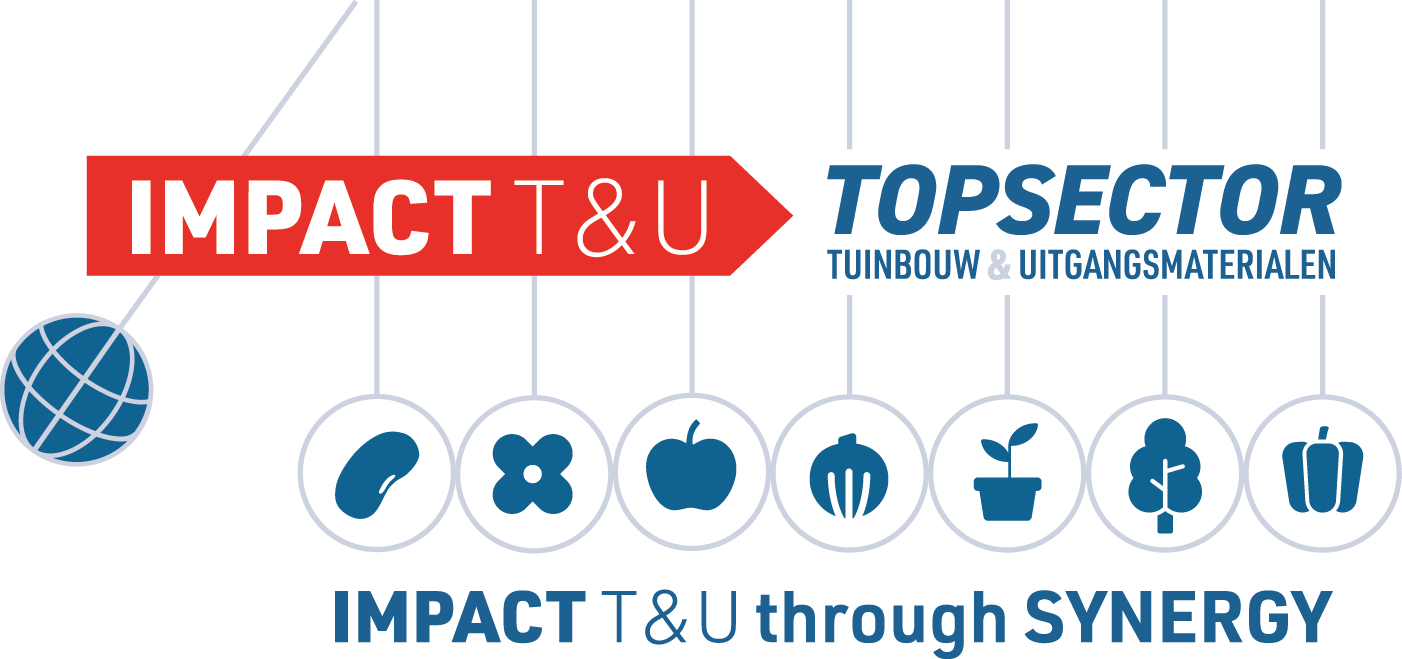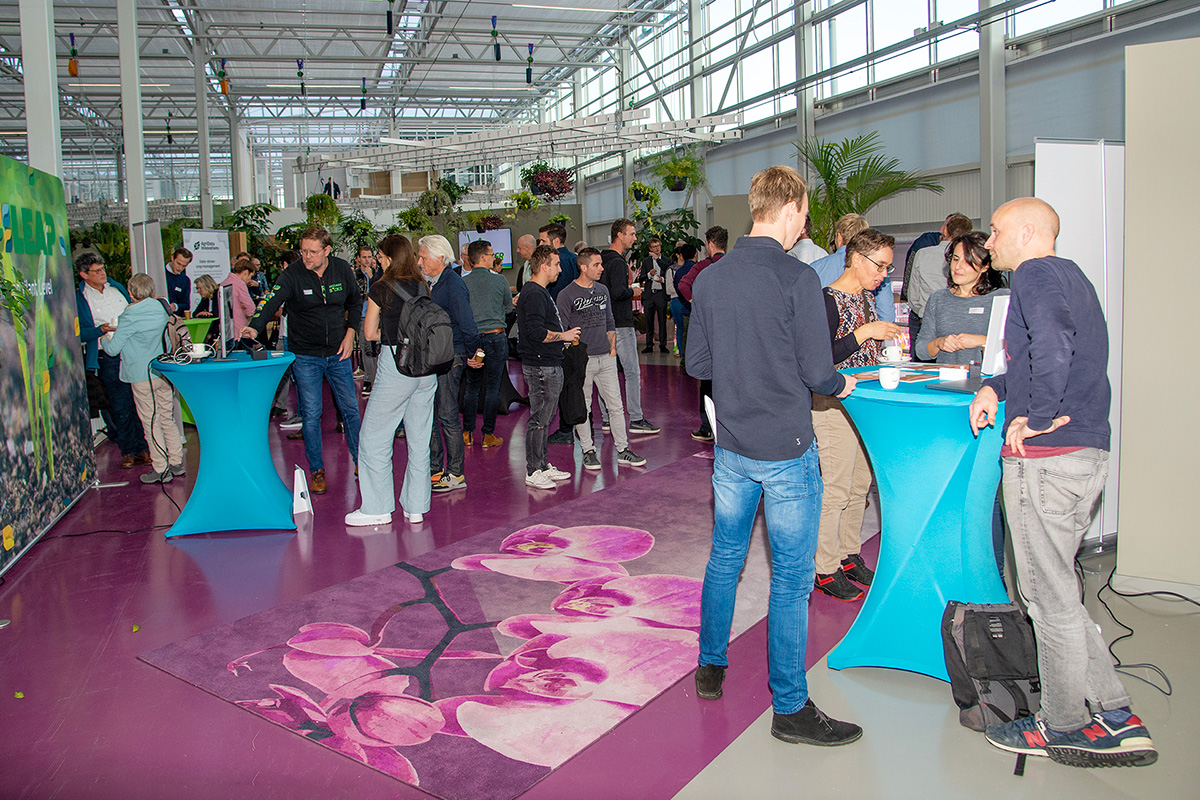Innovation MeetUp ‘The Future of Crop Protection’
Innovation MeetUp ‘The Future of Crop Protection’
Challenges and opportunities
On November 1st, 2022, 140 professionals from the horticultural industry met at the World Horti Center to discuss the innovations that are needed to make crop protection future-proof. By 2030, the EU wants the use of plant protection products to be halved. The central topic of the day was: what needs to be done to deal with this challenge? What should companies, research institutes, and other organisations in the horticultural industry do to turn this upcoming demand into an opportunity?
Crop system re-design
Upcoming EU regulations state that the use of chemical crop protection and the most dangerous pesticides must be halved by 2030. This regulation raises the question of how the Dutch horticultural sector continues to grow healthy crops and run a profitable business. Research and innovation are of course important in the search for new solutions as well as the implementation of those solutions. After an opening talk of by Jaap Bond, the figurehead of the Top Sector Horticulture & Starting Materials, the keynote speaker, Prof. Toby Bruce, clarified the need for a system re-design in crop protection through integrated pest management (IPM). He introduced the audience to the global food security challenge and how to tackle it through a ‘system re-design’. Such a re-designed system is composed of various components including monitoring, biological control, plant resistance breeding, and cultural control. He illustrated his case with succesful examples from his own research in which he, together with his colleagues, had been able to design IPM strategies that are now succesfully applied in wheat, maize, and various Brassica species. He summarized that a massive green revolution is needed to guarantee yields while reducing pesticide use.

Big data
After the perspective from academia it was time to listen to industry perspectives. Karel Bolckmans, Chief Technology Officer at Biobest Group, talked about IPM and the importance of big data and precision agriculture. According to him, crop protection of the future is data-driven precision IPM. Automized monitoring of plants plays a key role here. Bolckmans sketched a plan for a self-learning decision support system. First, this system is supplied with big data inputs to describe plant stresses. Based on these descriptions, the system will diagnose the causes of the plant stresses and predict how these plant stresses will further develop. The diagnosis and prediction will lead to a prescription for the control measures. The resulting action of this prescription is then implemented in the big data input of the system. For Bolckmans, quantification of plant stresses is one of the current challenges for the future of IPM.
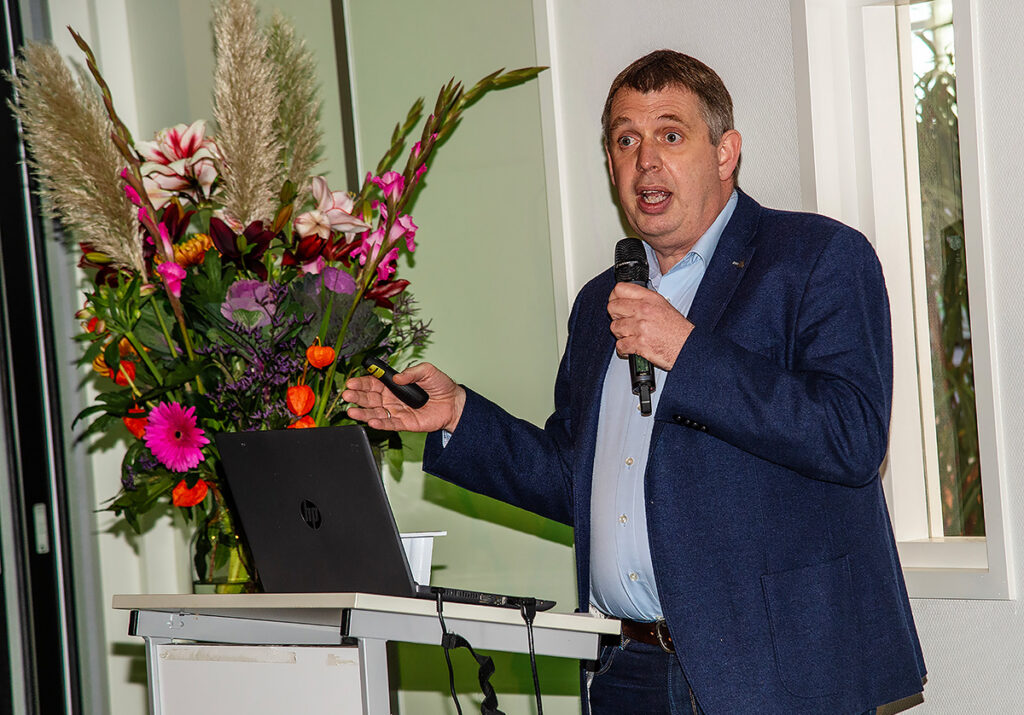
Triple challenge
Sustainability manager Christy van Beek of Bayer Crop Science showed that agriculture is now at a crossroads, and is facing a triple challenge. Agriculture must (1) ensure the production of enough food for a growing world population, while (2) at the same time the effects of climate change need to be mitigated, and (3) the environmental impact of agriculture needs to be reduced. She emphasized that crops are threatened by vast amounts of pests and diseases, and that the toolbox of growers to deal with them has been steadily decreasing due to increasingly stringent legislation. The only way forward is, also according to Van Beek, integrated pest management. This approach should first focus on the design of the desired food production system and subsequently on crop protection products.
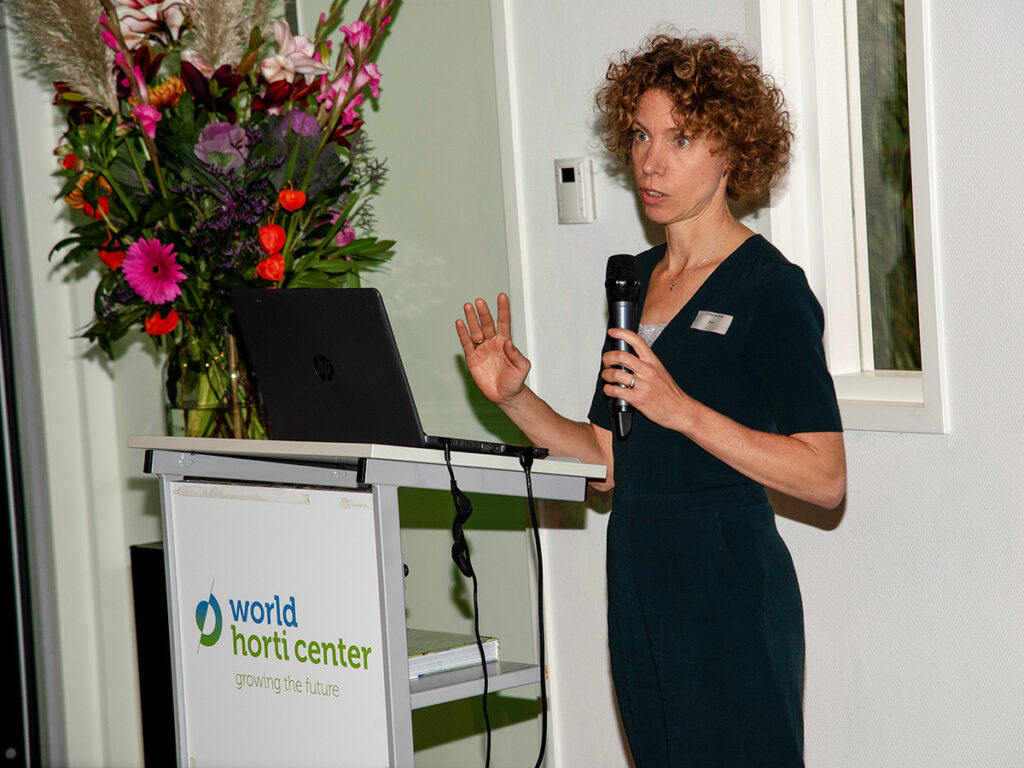
Panel discussion
During the panel discussion, speakers and attendees interacted to discuss the barriers to crop protection of the future and potential solutions. Peter Knippels, theme specialist for healthy crops at LTO Nederland, started the discussion by pointing out that more than one transition path should be developed, not only the system that we know nowadays; the highly intense production system. This implies going back to the ‘drawing table’ with a focus on research and on the role of the market. Live polls were held with the audience and the panel members around questions as “do we need more research, or more implementation of what we already know, in order to make crop protection more sustainable?”. A majority of the participants thought that, although a lot is known already, still more research is required. There was however broad consensus that research has to be goal-oriented, and that research results have to be put into practice faster. The panel members agreed that the task ahead is not an easy one. The Netherlands specializes in growing a large number of different crops and those crops are exposed to a large number of different diseases, pests, and weeds. Therefore, a wide range of solutions for a wide range of problems is needed for the future, and these solutions all need to “fit together”.

Knowledge synthesis
Next to speak were Richard Harrison, general director Plant Sciences Group at WUR, and Susanne Sütterlin, MT member Crop Protection & Phytosanitary Affairs at the Ministry of Agriculture, Nature and Food Quality. Harrison and Sütterlin responded with their perspective from the public sector responded to the earlier speakers and the panel discussion. Harrison underlined that, when it comes to innovation, knowledge synthesis is equally important as doing research. In his opinion, research provides new knowledge on the redesign of current methods and the innovation of alternatives. Knowledge synthesis also helps policy makers to evaluate market, environmental and climate trade-offs. Sütterlin explained the task of the governmental policymakers on balancing needs of agriculture and society. While the industry demands clearer guidelines to reduce investment risks for new innovations, society demands stricter regulations to ensure safety. Finding the right balance here is a task for the government.
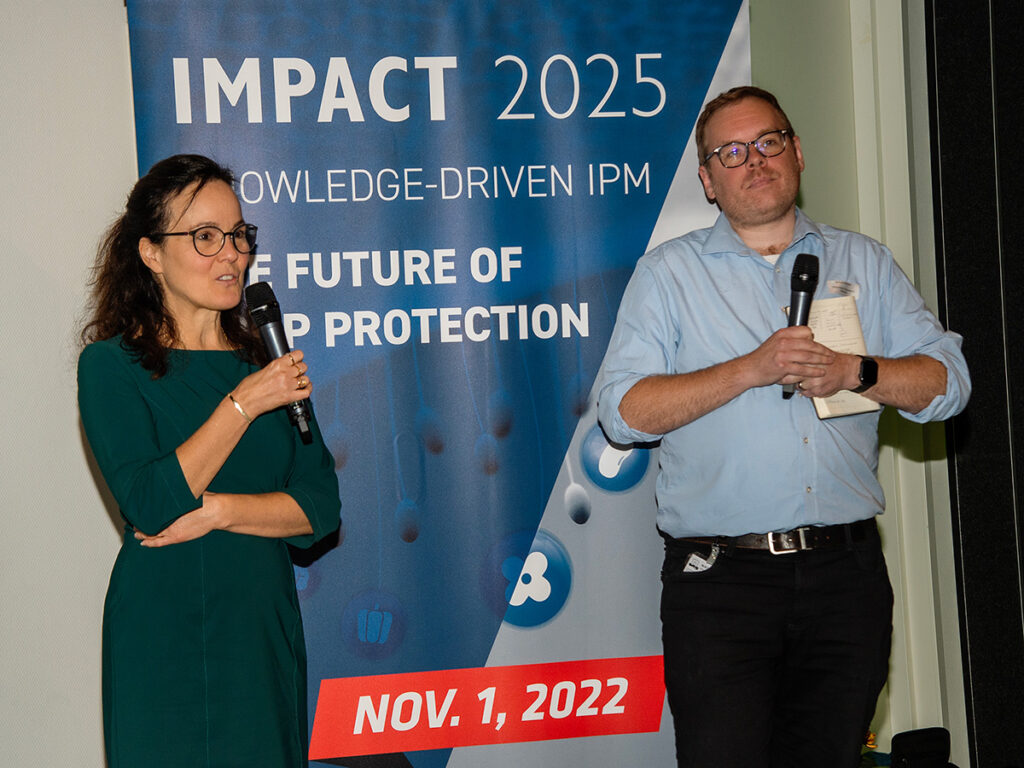
More investment
A survey of participants showed that investing more in research and innovation is now the most important thing to achieve the European Commission’s goals. Additionally, the participants agreed that closer communication and cooperation between the actors in the value chain is required. Ultimately, the participants were asked what they can do themselves within their part of the value chain to make the future of crop protection happen. Most participants responded with their role in research and production of cheap as well as scalable biological control agents, resistant plants and monitoring material. Additionally, participants support the transfer of knowledge through education, coaching, and open access to research.
Finally, Jaap Bond concluded that many actions are already done but still acceleration is needed. He emphasized that, although the task ahead of us is not an easy one, the industry is capable of handling this challenge, not least because of the Topsector. The Topsector instruments will help to develop reliable, feasible, and profitable crop protection strategies to reduce 50% of pesticide use. This self-confidence was also reflected in another poll question: over 75% of participants see the upcoming EU regulation as a stimulus for innovation and an opportunity for the Netherlands.
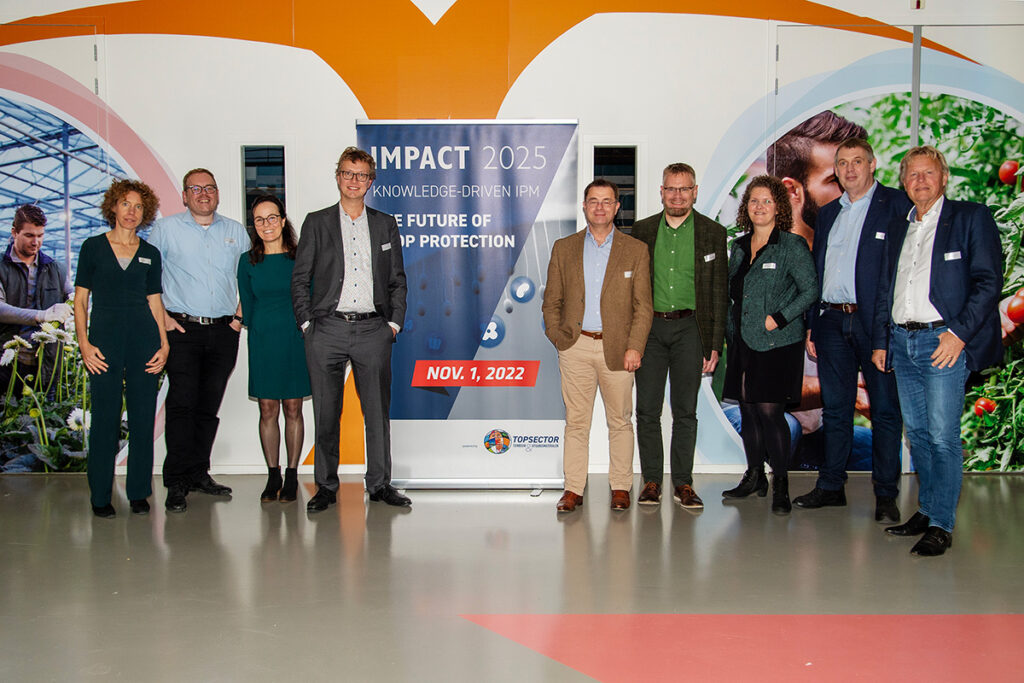
High potential
During the breaks and afterwards, ten startups presented themselves on the startup square. They gave a glimpse into the future in which the use of alternatives to chemistry is a real option for horticulture. Prevention, monitoring and intervention of IPM play an important role in this. Startup Blomitec is working on technologies to improve the microbiome, increase productivity while reducing the use of pesticides and fertilisers. Spark Radar is developing novel molecular based detection and diagnostic tools. New approaches to data-driven greenhouse management are being developed at AgriData Innovations, including scouting using advanced camera systems and data analysis software. Scope Bioscience uses Crispr-Cas technology for diagnostics and detection purposes. InsectSense is using the olfactory sensors of insects to detect volatile organic compounds associated with specific pests and diseases. BioMosae focuses on pest control by using enzyme-based biological ingredients, and PATS Indoor Drone Solutions is developing systems that detect, and kill if needed, flying insects in greenhouses. BBLeap is focusing on plant-individualized treatment. H2arvester has developed mobile solar panels that also provide opportunities in crop protection, for instance via crop scouting.
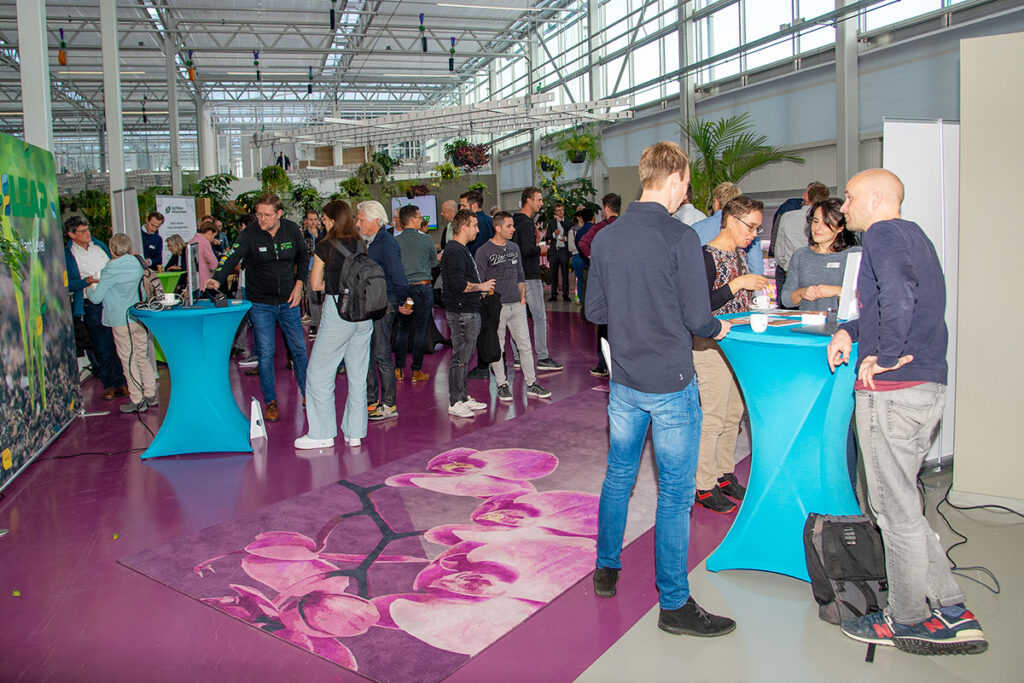
Deel dit artikel:
